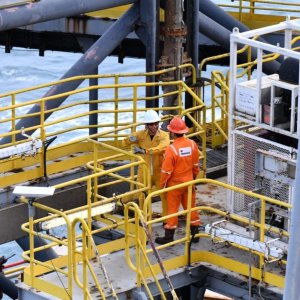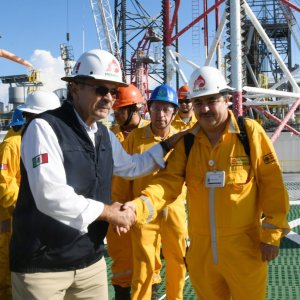
PEMEX Promises Oil Production Increase at Quesqui
 By Karin Dilge | Journalist and Industry Analyst -
Mon, 10/17/2022 - 17:39
By Karin Dilge | Journalist and Industry Analyst -
Mon, 10/17/2022 - 17:39
PEMEX CEO Octavio Romero Oropeza assured that the Quesqui field currently produces around 133M b/d, but the NOC is expecting to close the year with much higher production figures.
PEMEX’s division for Exploration and Production (PEP) foresees that by the end of 2022, the onshore Quesqui field, located in Huimanguillo, Tabasco, will be producing 250Mb/d of crude oil, roughly double what is being produced today.
Moreover, it is expected that gas production will reach 500MMcf/d. Romero recently visited the field and highlighted that Quesqui is the most important field among PEMEX’s new developments, of which there are nearly 40. “The results are very good and I have no doubt that we will accomplish the objectives we have set,” he said.
Ángel Cid Mungía, Director, PEMEX Exploration and Production (E&P), explained that Quesqui has 14 existing wells ready and that by the end of the year, 11 more wells will be drilled, while for 2023 the NOC aims to include 10 additional wells.
Victor Gerardo Vallejo, Deputy Director of Strategic Production Projects, PEMEX E&P, said that the company adopted a different strategy based on the link-up between planning, engineering, design and execution, as this approach has yielded good results by considerably decreasing the drilling time of wells.
Since López Obrador took office, PEMEX has focused its production strategy on onshore and shallow-water fields that can be developed rapidly. This has allowed the state-owned company to stabilize its historically dropping production between 1.69Mb/d and 1.72Mb/d.
Nevertheless, CNH has repeatedly denied PEMEX’s development plan for its flagship Quesqui field due to the plan’s low probability of success.
“Based on the technical analysis carried out by CNH, the information delivered as part of the request of approval of the Development Plan and the data presented by the recipient, it was concluded that the elected development method shows a low level of technical definition, which represents a high risk and uncertainty for the success of the project,” CNH pointed out.
Moreover, the commission said that PEMEX had previously requested to modify the assignation of the production area. Still, the NOC experienced significant delays, in addition to presenting inconsistencies in information regarding investment, production and oil reserves, which CNH argued showed a lack of quality control in the delivered documents. Descriptions regarding rock-fluid compatibility and gas-water contact were missing entirely. According to the commission, the deposit shows high pressure and temperature levels, making the project a potentially dangerous venture.
















